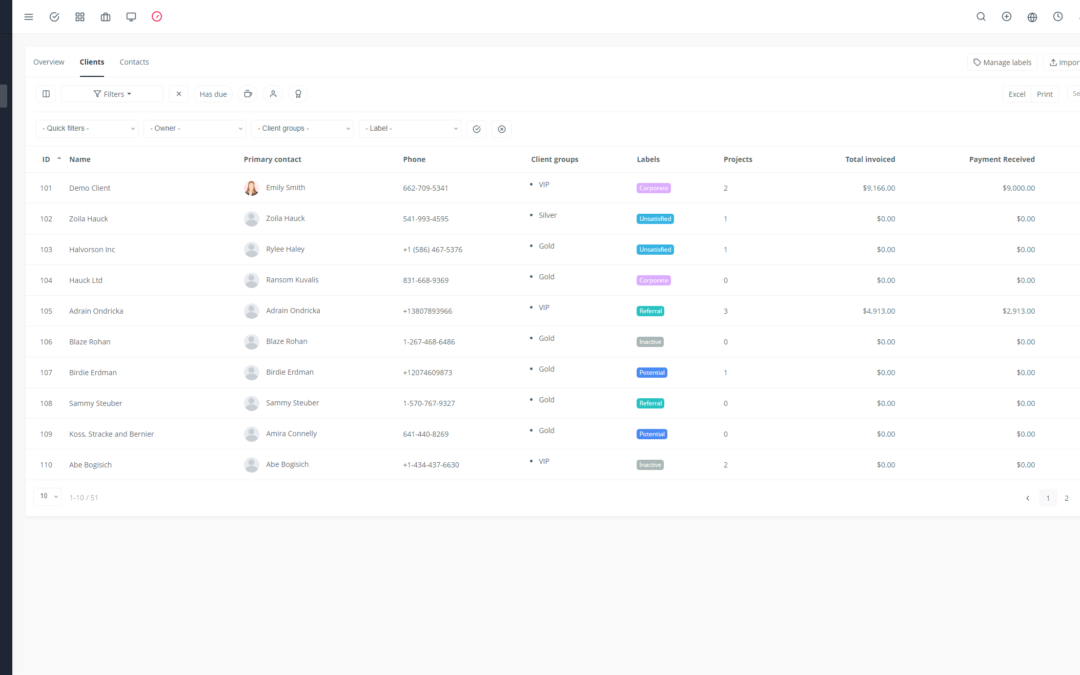Migrating to a SaaS CRM is a significant strategic decision for any business looking to optimize operations and enhance performance. But before diving headfirst into this project, it’s crucial to understand the challenges that lie ahead.
Here’s a comprehensive guide to help you successfully migrate and fully leverage the benefits of a SaaS CRM:
1. Evaluate Costs and Choose the Right CRM 💰
Migration Costs: The total cost of migrating to a SaaS CRM often extends beyond the initial fees. Consider:
Initial Costs: License, configuration, integration.
Training Costs: User training, coaching, and support.
Customization Costs: Adapting the system to your specific needs.
Maintenance Costs: System maintenance, updates, and technical support.
CRM Selection: Choosing the right CRM is essential for migration success.
Feature Alignment: The CRM should meet your specific needs for sales, marketing, customer service, and customer relationship management.
Vendor Analysis: Compare vendors based on features, pricing, reputation, and support services.
Integration Assessment: Ensure the CRM integrates easily with your existing systems.
2. Migrate Data Carefully 🗄️
Data migration is a critical step that requires meticulous planning.
Extract Existing Data: Ensure you extract all necessary data from your current system.
Clean and Transform Data: Correct errors, standardize formats, and prepare data for integration.
Integrate Data into the New CRM: Ensure data is correctly imported into the new system.
3. Train Users and Manage Change 🧑🏫
A successful CRM migration depends on user adoption.
Learning the New System: Provide comprehensive training and clear resources to help users adapt to the new system.
User Adoption: Encourage the use of the new CRM and address user questions and concerns.
Managing Resistance to Change: Anticipate resistance and implement strategies to minimize it.
4. Configure and Integrate the CRM 🔧
CRM Configuration: Customize the CRM to meet your specific needs and processes.
Workflow Customization: Optimize sales, marketing, and customer service processes.
Process Automation: Automate repetitive tasks to save time and improve efficiency.
Integrate Existing Systems: Connect the CRM to your sales, marketing, customer service, and other business systems.
5. Ensure Data Security and Compliance 🔒
Data security and compliance are paramount.
Protect Sensitive Data: Ensure the security of sensitive data by following best security practices.
Compliance with Regulations: Ensure the CRM complies with data protection regulations.
Access Management: Control access to data and ensure only authorized users have access.
6. Manage Availability and Performance 📈
System Downtime: Minimize system downtime to ensure maximum availability.
CRM Performance: Ensure the CRM provides high performance to meet your business needs.
Managing Traffic Spikes: Be prepared to handle traffic spikes and ensure a seamless user experience.
7. Offer Effective Maintenance and Support 🤝
System Updates: Ensure the CRM is updated regularly to benefit from the latest features and security patches.
Technical Support: Provide reliable technical support to address user questions and issues.
Incident Management: Implement an incident management process to quickly resolve technical issues.
8. Manage Change and Adoption 🔄
Stakeholder Communication: Clearly communicate the goals, steps, and benefits of the migration.
Transition Planning: Develop a detailed migration plan to minimize disruptions.
Minimizing Disruptions: Prepare users for the transition and minimize service interruptions.
9. Evaluate Migration Success 🎯
Define Key Performance Indicators (KPIs): Define KPIs to measure the success of the migration.
Track Results: Monitor KPIs and regularly assess the impact of the CRM.
Impact Assessment: Measure the CRM’s impact on your business performance.
10. Manage Risks and Ensure Security ⚠️
Risk Identification: Identify potential risks associated with the migration.
Mitigation Planning: Implement measures to mitigate identified risks.
Incident Management: Effectively manage incidents and issues that may arise.
11. Encourage Adoption of the New CRM 🤝
User Engagement: Encourage users to embrace the CRM and make the most of it.
Regular System Usage: Ensure users use the CRM regularly and effectively.
Maximizing ROI: Maximize the CRM’s return on investment by using it fully and optimizing its features.
12. Harness the Power of Data and Analytics 📊
Data-Driven Decision-Making: Use CRM data to make informed decisions.
Performance Reporting and Analysis: Analyze CRM performance and identify areas for improvement.
13. Ensure CRM Scalability 📈
Adapting to Future Business Needs: Ensure the CRM can meet your future business needs.
Extensibility and Customization Capability: The CRM should be flexible and adaptable to change.
14. Align the CRM with Business Processes 🤝
Alignment of CRM with Business Processes: Ensure the CRM integrates seamlessly with your business processes.
Workflow Optimization: Optimize workflows to enhance efficiency and productivity.
15. Foster a CRM-Driven Company Culture 🤝
Company-Wide CRM Adoption: Encourage all employees to use the CRM.
Promoting System Usage: Promote the CRM and its benefits.
16. Manage Budget and Planning 💰
Resource Allocation: Allocate the necessary resources to successfully complete the migration.
Time Management: Adhere to deadlines and manage time effectively.
Budget Adherence: Stay within budget and manage expenses responsibly.
By following these steps and addressing these challenges, you can achieve a successful migration to a SaaS CRM and reap its numerous benefits to transform your business and maximize your success. 🚀

